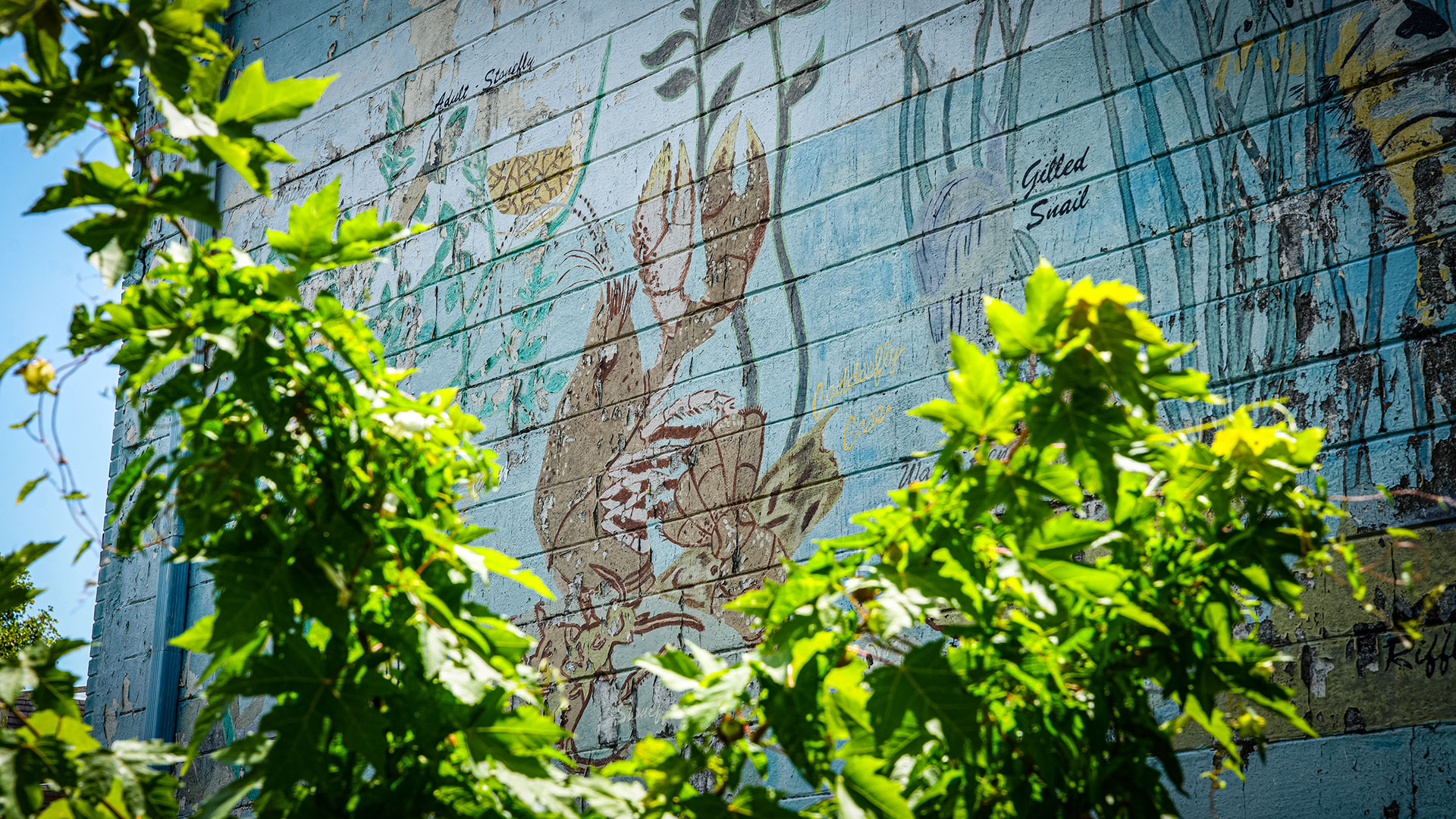Shanna Hanes and some of her students at UT Southern have embarked on a mission to clean up Giles County streams.
“It’s a little pie in the sky, but we’re going to make it happen,” says Hanes, an associate professor of biology and the campus’ sustainability coordinator.
The stream project began a couple of years ago, when then-senior Carson Bailey of Lewisburg decided to evaluate and improve the water quality of Pulaski’s Pleasant Run Creek in the Richland Creek-Petty Branch watershed.
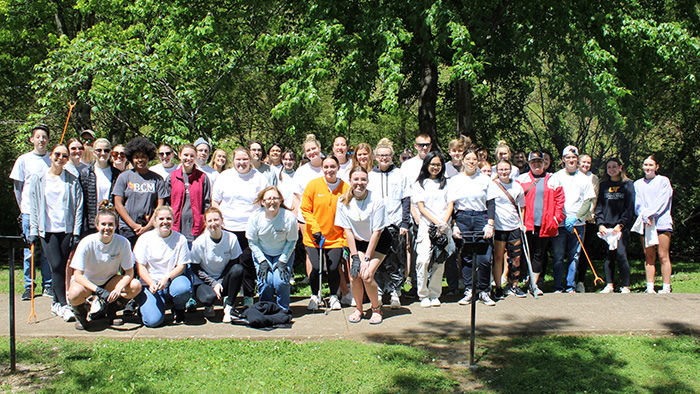
“When I took Dr. Hanes’ Conservation Biology course in spring 2022, I realized that conservation was how I wanted to make a difference,” he says. “I took her sustainability class the following semester and eventually decided to undertake undergraduate research with her as my advisor.”
Hanes says mentoring students in research taps into her passion for natural resources and gives students “the opportunity to learn in their backyard. It’s very important to embrace some of the challenges we have here in Giles County.”
Picture of Biodiversity
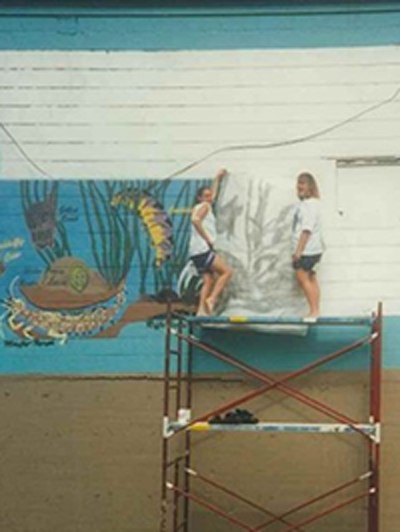
Hanes is a marine biologist with a background in cellular and molecular biology. While she has spent time studying coral in the Florida Keys, living in Tennessee has meant focusing on the flora and fauna of freshwater rivers and streams.
For the past nine years, Hanes has led a cleanup along a stretch of Pulaski’s Pleasant Run Creek as part of EarthFest, a week of sustainability activities she plans for the campus each April. Participating students are often fascinated by the creatures—from crayfish to katydids—they encounter. Some vow to do more to keep the stream livable for those and other creatures.
Bailey made such a promise and focused his research on Pleasant Run Creek.
While they couldn’t find published materials describing the watershed’s flora and fauna, Bailey and Hanes had a unique visual guide to the historical biodiversity.
In the cleanup area, “along one of the buildings, there is an old mural painted,” Hanes says. Still visible, despite the chipping and fading hues on the 30-year-old mural, are images of crayfish, fish and insect larvae—a virtual lexicon of species native to the watershed.
The mural was painted in the mid-1990s by students from Martin Methodist College (now UT Southern), supervised by Gail Bergeron, who taught art at Martin Methodist. Bergeron and her students collaborated on the mural project with the late Dan Speer, who served as mayor of Pulaski from 1989 to 2011, and with a Martin Methodist biology faculty member. Speer and the biology instructor were engaged in their own stream cleanup project back then.
Research ‘Started Something’
Pleasant Run Creek has been degraded by pollution, urbanization, erosion and nutrient excess. In 2018, an environmental group sued the town of Pulaski for releasing more than 30 million gallons of untreated wastewater in the area’s waterways. Also, a concrete blockage on one side of the stream impedes water flow.
Taking photos and pulling water samples, Bailey identified living things along the stream and in the water.
He found five types of invertebrates, with Elimia (a type of freshwater snail) being the most abundant. He also found a type of leech, two types of crayfish and two other types of snails. And he found an invasive species of Asian clams.
“I was not able to find any insect species, such as mayfly or dragonfly nymphs. This is a particularly bad indicator for water quality,” he says.
Bailey concluded his report by insisting that experts and community members should continue the work to restore the area.
“Eventually, the goal will extend to spreading these restoration efforts throughout the entire Richland Creek-Petty Branch watershed, which is also the site of collection for the city’s water,” he says.
More UT Southern students will begin independent research in the fall with Hanes—and some of their work will build on Bailey’s.
“It’s great to hear that my undergraduate research started something,” Bailey says.

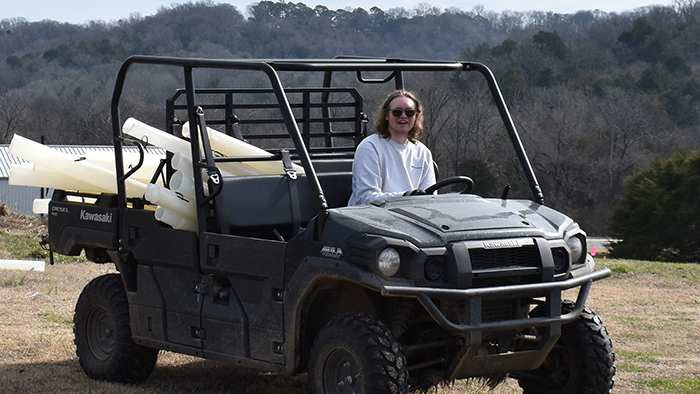
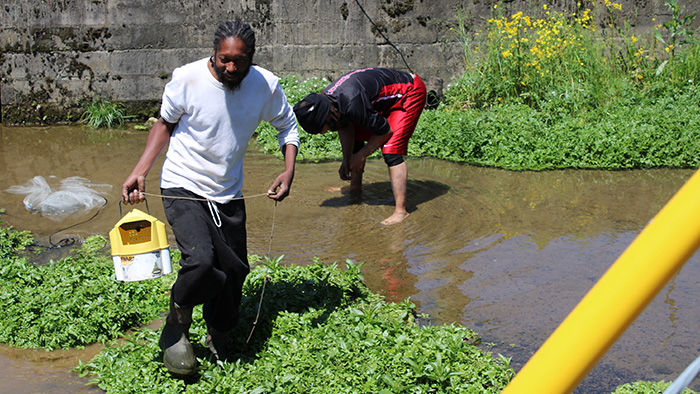

Click to Expand Images
Having an Impact
While still in its infancy, UT Southern’s stream research is already reaping benefits.
Bailey, a first-generation college student, graduated from UT Southern in 2023 and is now a research assistant in a conservation lab and a biology teaching assistant at Middle Tennessee State University. He’d like to work in research or in wildlife reserve management in a state or national park.
“Whatever I go into, I want to make a difference ecologically,” he says.
Rainey Oakley, a junior from Athens, Alabama, is conducting independent research with Hanes this fall.
“I want to focus on water quality and maybe even a survey of amphibians and/or the aquatic species we have in Richland Creek,” she says. “I want to really be a part of the growing efforts to protect our world. I would love to work at a state park, aquarium, zoo or even a fishery.”
Mackenzie Autry, a sophomore from Woodlawn who dreams of working in conservation law or running her own conservation nonprofit, focused her independent research on “formulating principles of successful conservation nonprofits into a new model that makes regulation of those nonprofits more effective.”
Hanes is hopeful that her students’ efforts spark broader conservation work that involves UT Southern, industry, government and residents.
“My wish is that, down the road, we can use this information for grant-writing purposes,” she says. She aims to improve water quality and biodiversity.
She wants to help her students experience all facets of restoring biodiversity—doing annual creek cleanups, studying biology and engaging in research to identify issues and propose solutions.
“I don’t want my students to miss a beat of it,” Hanes says.
